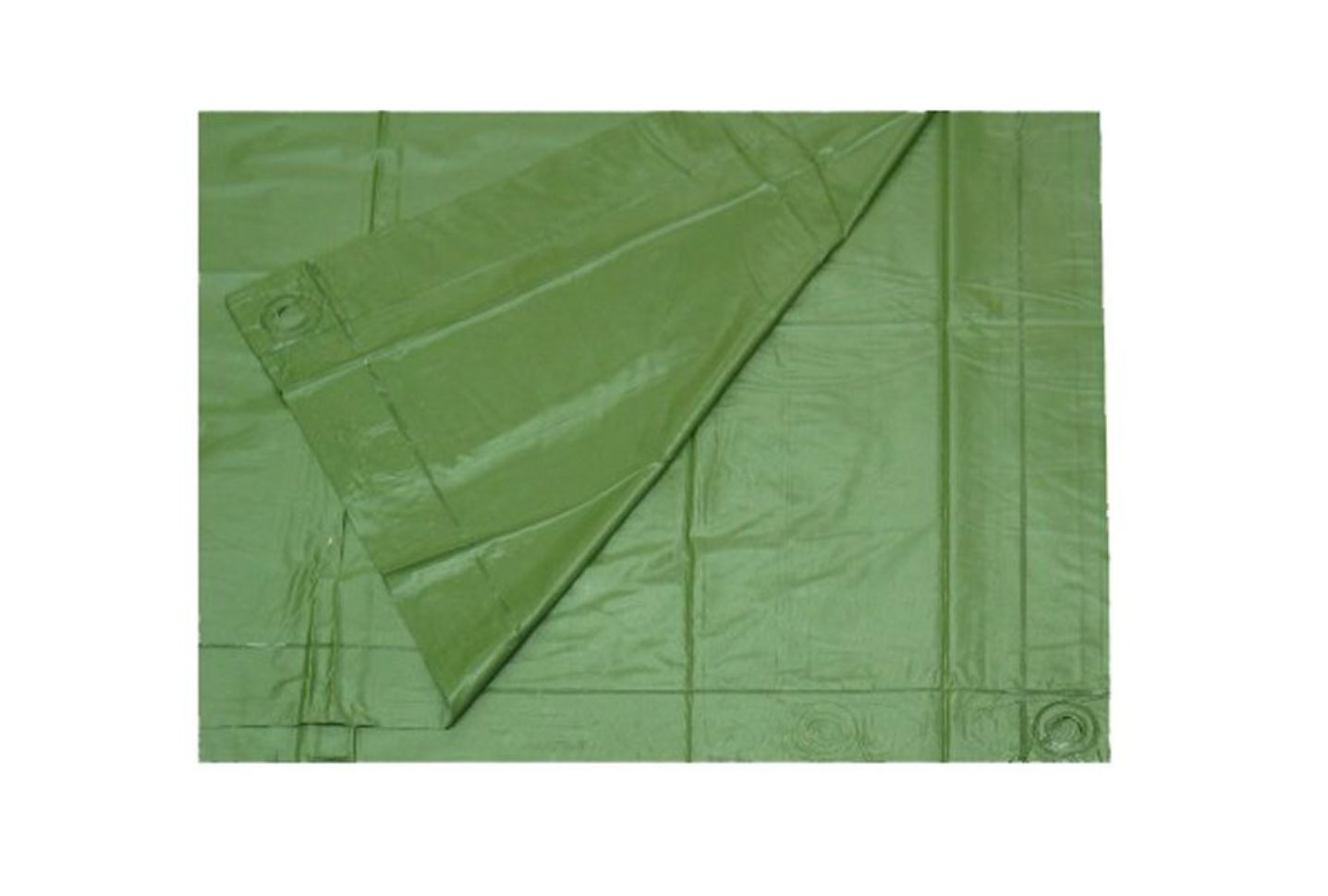The groundsheet is great for rolling out your swag or erecting a tent onto and protecting the bases from damage caused by sticks, stones or foliage. It’s much cheaper to replace a groundsheet than a swag or tent.
They also help with keeping dirt and sand out of your living space, swag or tent. Some groundsheets prevent water ingress and/or reduce condensation and some protect the grass at campsites as they allow the grass to breathe.
Each groundsheet does the job required differently and some are only good for one thing. Here is an in-depth look at each type of groundsheet, to make it easier for you to decide on whether you need one and if so, which is the right one for you.
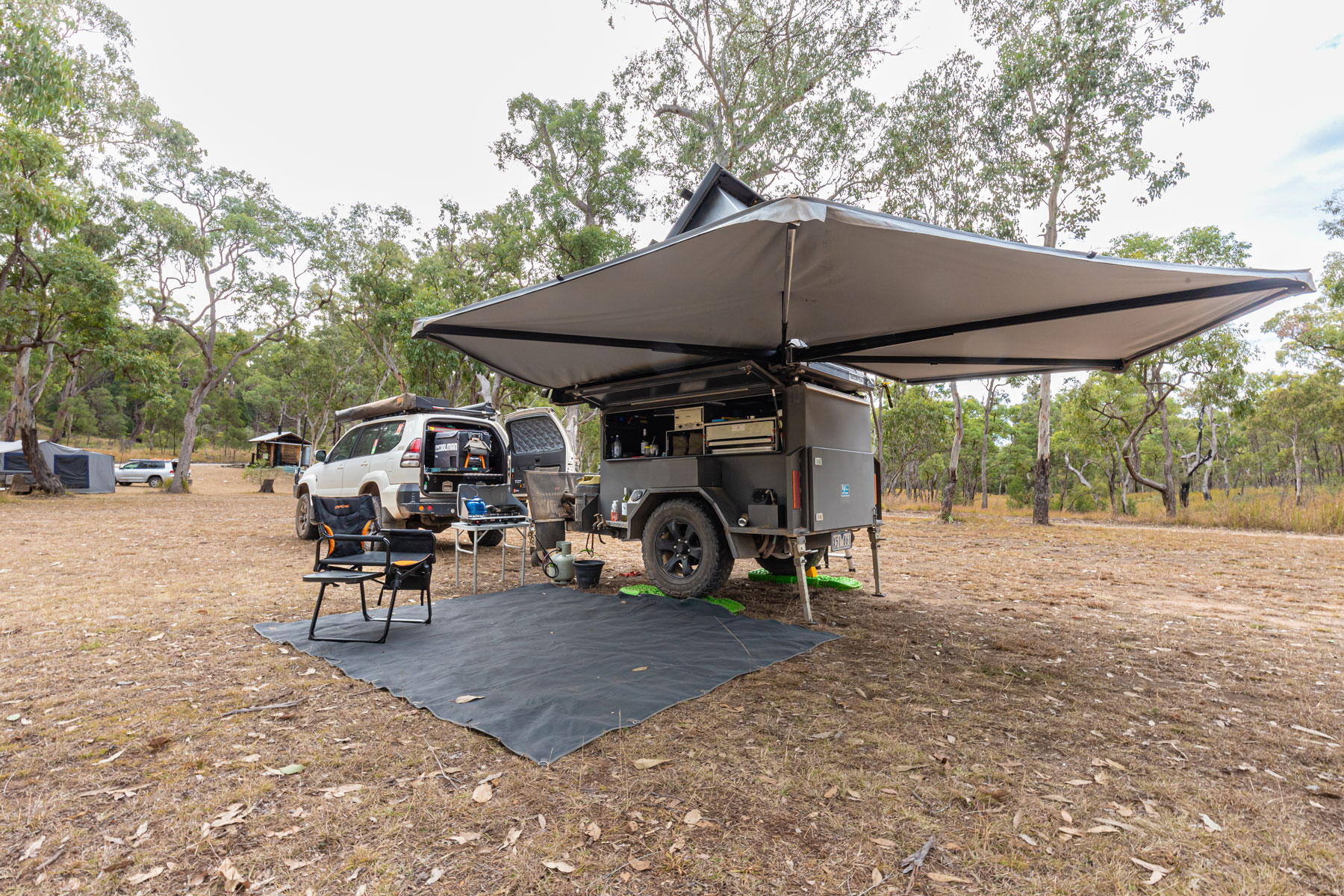


Tarps
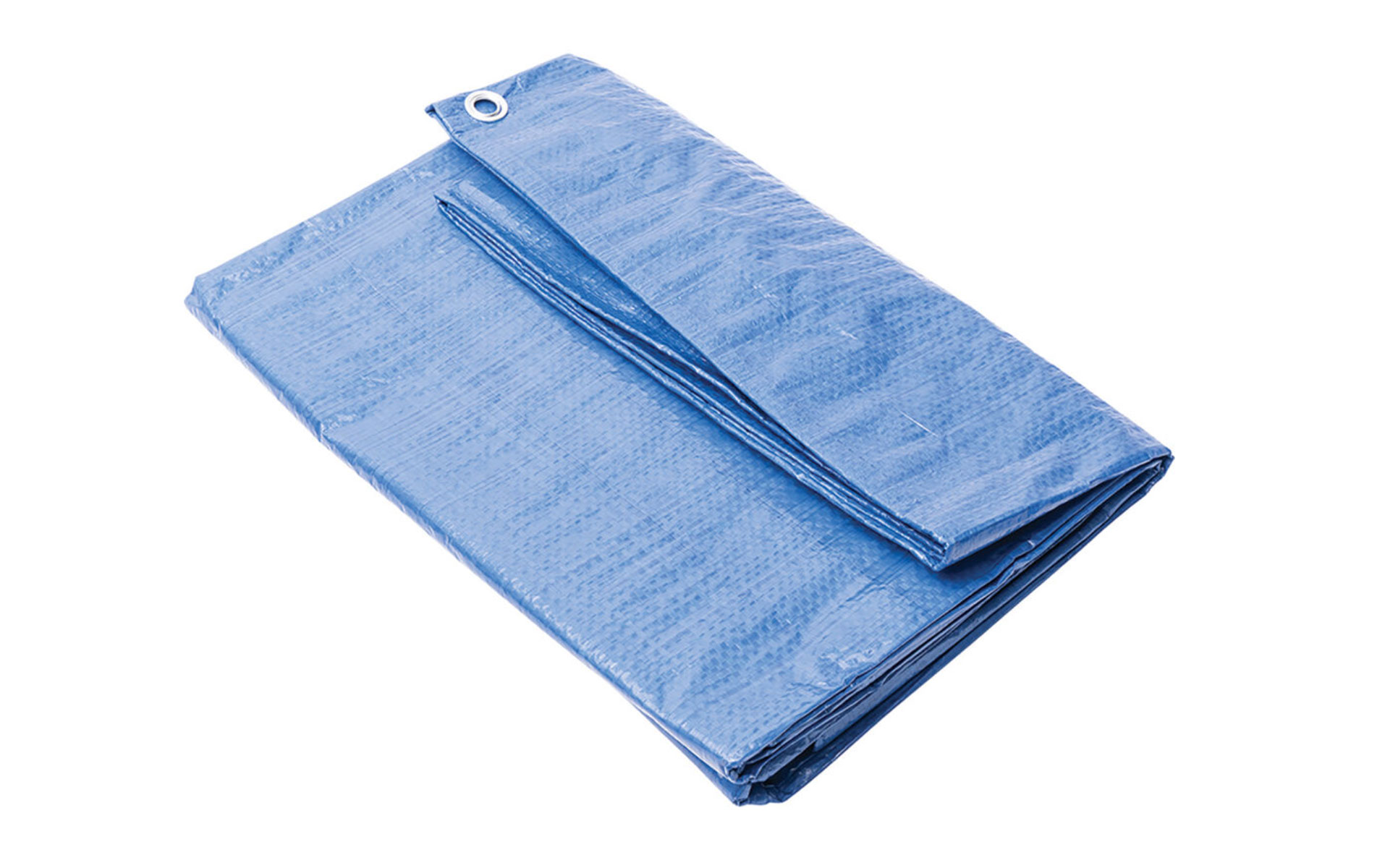
By far the cheapest option, the simple tarp is also the most versatile meaning you get excellent value for money. You can pick up one of these tarps from almost anywhere such as Bunnings, Supercheap Auto, Kmart and the like. These groundsheets are extremely versatile and can also be used as a wall on your awning, something to lie on when under your vehicle, extra cover when it is raining or even as a cover on your trailer on tip runs.
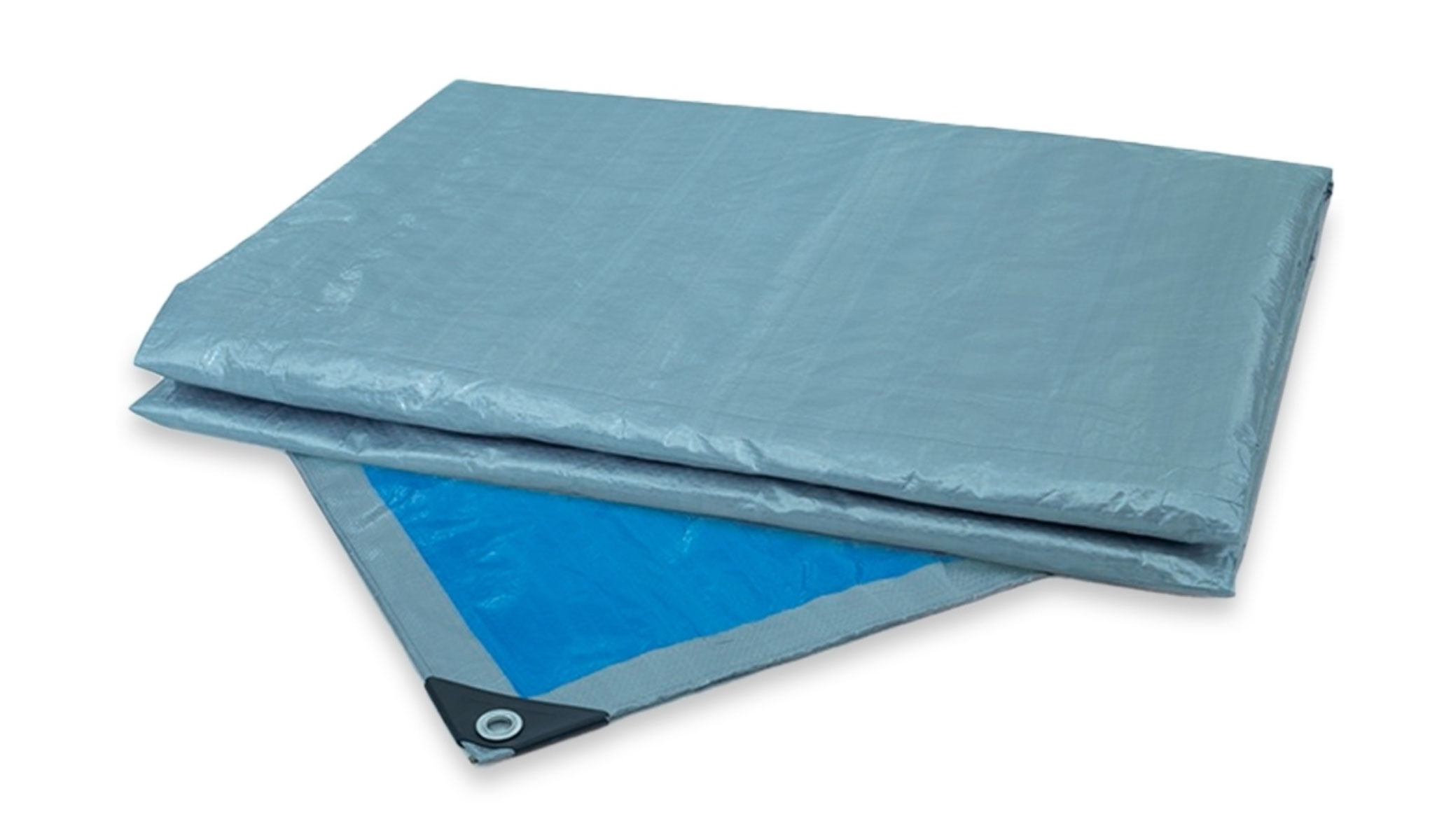 Caravan Park owners really dislike campers using tarps as a ground cover and they are not permitted in many of them as they don’t breathe, damaging the grassed sites. This factor also causes condensation under your swag or tent meaning the outer floor is wet when you are trying to pack them up. If the ground is saturated, pressure on the groundsheet can cause water to seep up through the material, especially on the cheap tarps. During rain, water will pool and often flow underneath your swag or tent, making camping life difficult. Most tarps come with reinforced eye holes that allow you to peg them down if needed.
Caravan Park owners really dislike campers using tarps as a ground cover and they are not permitted in many of them as they don’t breathe, damaging the grassed sites. This factor also causes condensation under your swag or tent meaning the outer floor is wet when you are trying to pack them up. If the ground is saturated, pressure on the groundsheet can cause water to seep up through the material, especially on the cheap tarps. During rain, water will pool and often flow underneath your swag or tent, making camping life difficult. Most tarps come with reinforced eye holes that allow you to peg them down if needed.
Pros
- Cheap
- Waterproof (better quality ones)
- Versatility
Cons
- An overhang can cause water to flow under your tent or swag
- Don’t breathe causing condensation and damaged grass
- Not impervious to water coming up through if pressure put on it
Mesh/Shade Cloth
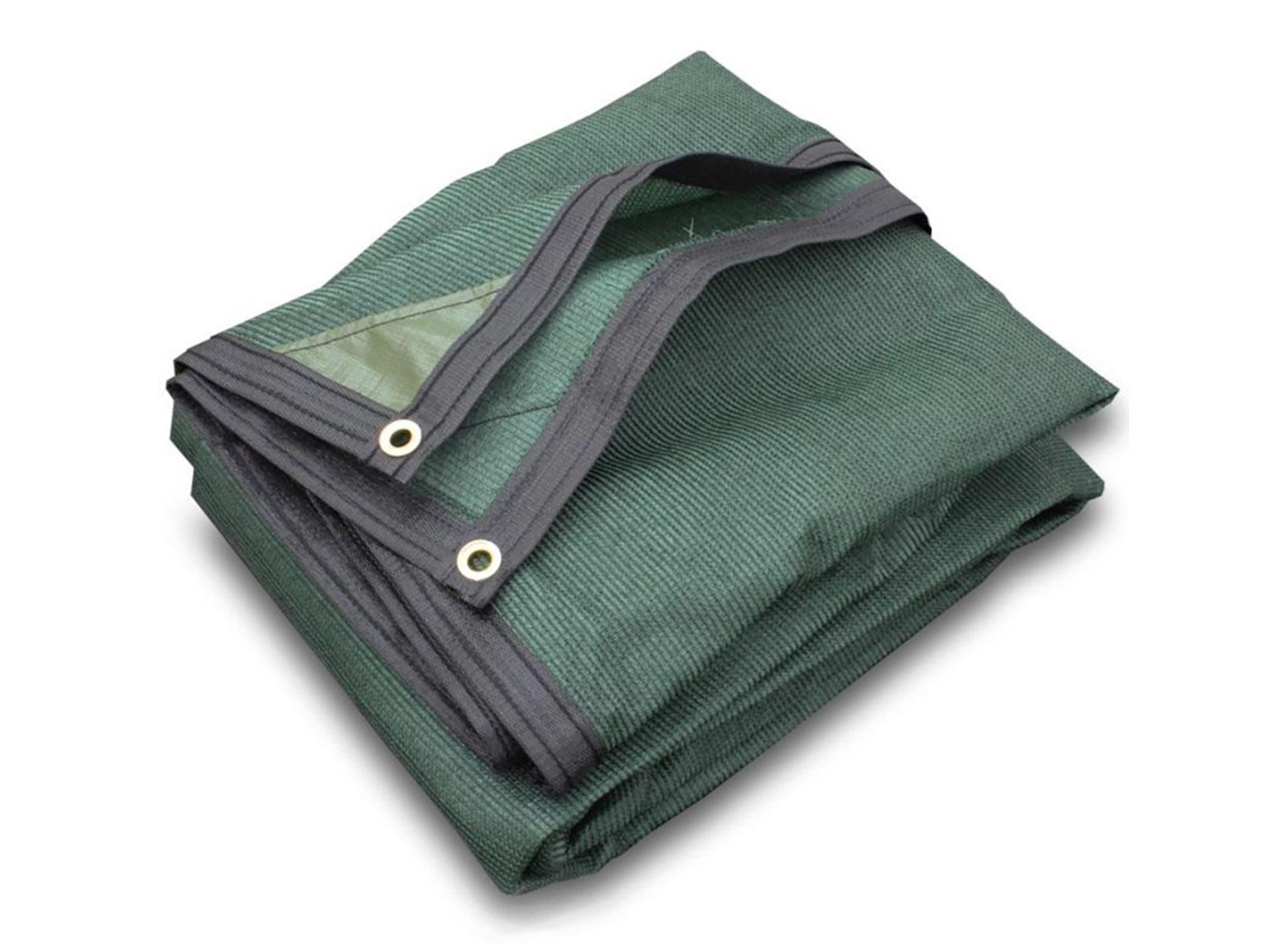
Shade cloth is a great option as you can cut it to size, bang pegs through it, use it as a wall on your awning and it’s easily replaceable. Dirt and water will fall through the mesh, so it helps in keeping your living area clean as well as your swag or tent.
You can also buy mesh groundsheets that usually come with stitched edging and re-enforced holes for pegging them down. These groundsheets are generally UV stabilised, are breathable and water will flow through and will help in keeping your campsite clean. You can pick this type of mesh groundsheet up from places like Snowys, Tentworld and Anaconda.
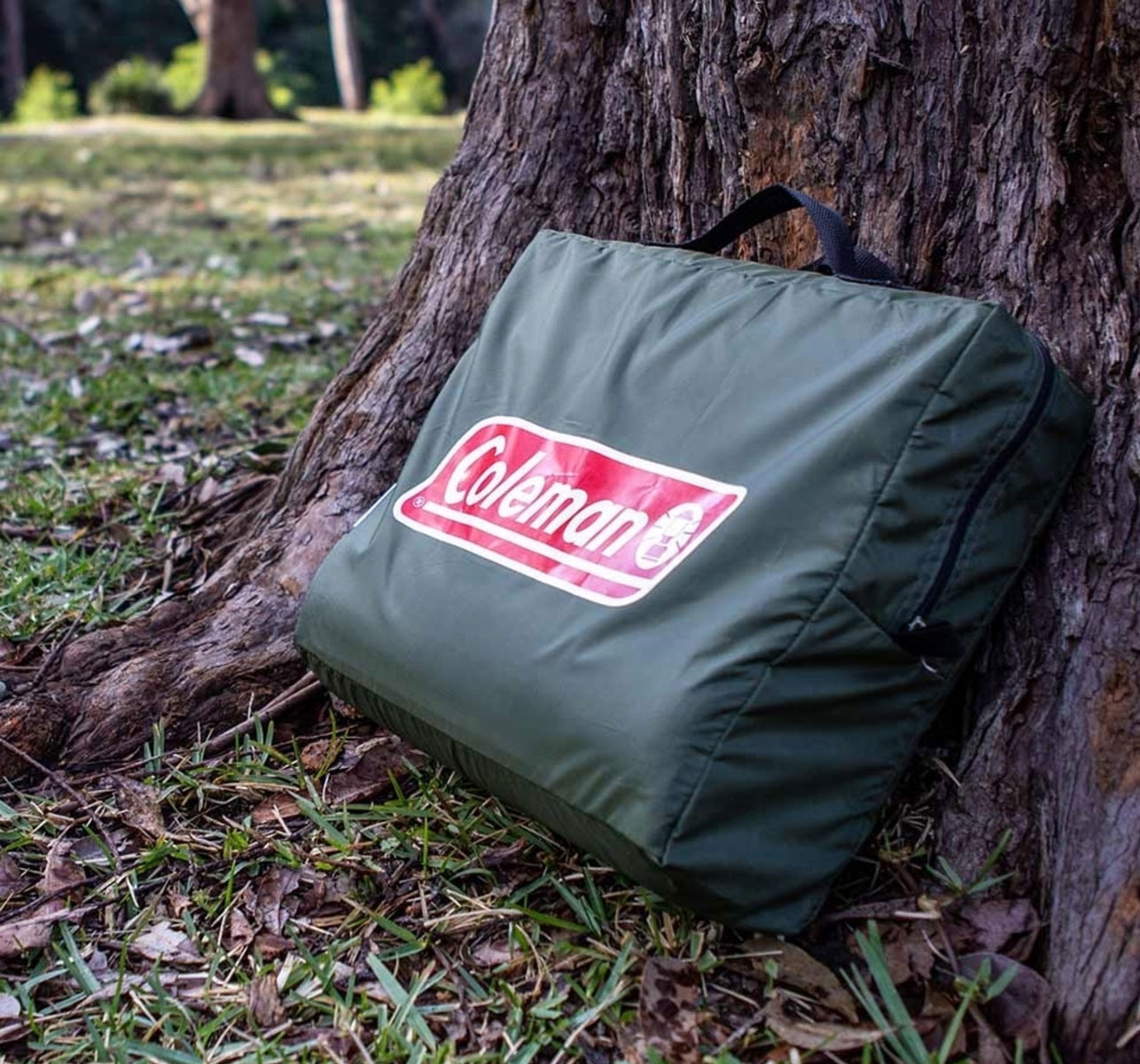
Shade cloth or mesh groundsheets can also be used as a shade sail or windbreak when you are camping and I recommend you buy one that comes with a storage bag as they are easier to pack and help keep any dirt and dust out of your camper or 4WD.
Pros
- Easy to clean
- Sand and dirt can fall through
- Non-absorbent
- Mid-level pricing
Cons
- Not waterproof
- Not impervious to sand and dirt
Multi-Mat
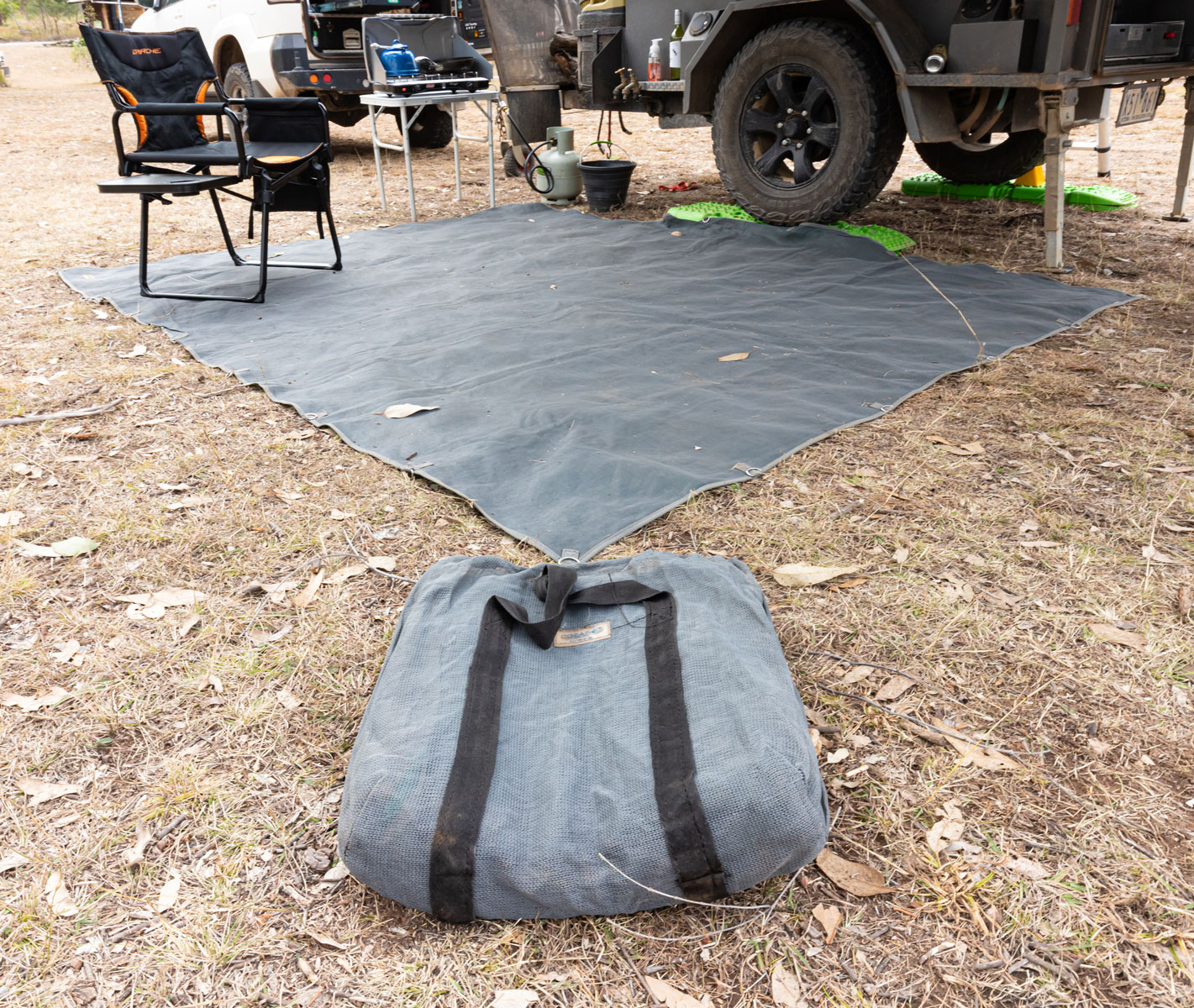
When I first saw the video showing a helicopter in the desert kicking up sand and dirt before landing on the matting without causing a storm, I had to check out the C-Gear Multimat. At that stage in my camping life, the price was restrictive and so continued with our shade cloth solution.
When I could afford to upgrade to C-Gear, I was not disappointed as it did what was advertised, allowing dirt and sand to fall through the mat yet not allow it to come back up through the mat. This is due to C-Gear’s patented multi-weave technology. These mats come in a variety of sizes and a storage bag to match.
Fine dust, dry grass, seeds and prickles will stick to the mat but are easily swept or washed off and I find most of it ends up in the bottom of the storage bag after a day’s driving. The mats can also be slippery when wet, so take care when it’s raining.
C-Gear mats can also be used as privacy screens by attaching them to your awning or you can buy C-Gear Privacy Screens that are more suited to caravan awnings.
Pros
- Easy to clean
- Allows sand and dirt to fall through but not come back up through the mat
- Non-absorbent and won’t rot or mould
- Recyclable
Cons
- Expensive
- Not waterproof
- Slippery when wet
Canvas
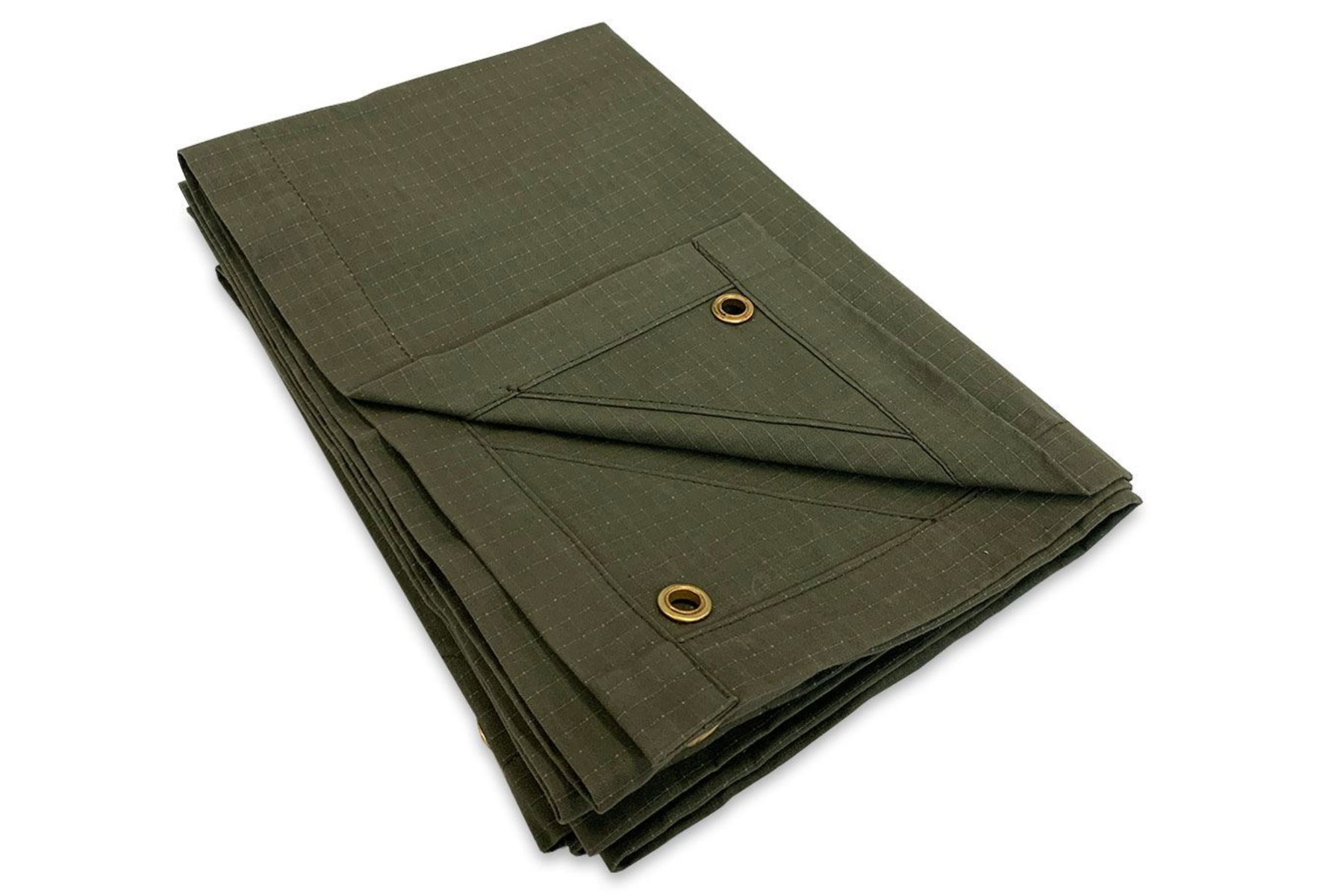
Canvas groundsheets are old school, used by drovers then overlanders before non-natural products were even thought of. They are great to use under your swag or a stretcher bed and the canvas prevents cats’ eyes and other nasty bindees from stabbing your feet when hopping into bed for the night.
Most canvas groundsheets are between 14-18oz and come with eyelets and reinforced corners. Some of the benefits of using canvas are that it is waterproof, mildew resistant and breathable, however, it does stain easily and is difficult to clean, especially if it’s been used in red outback dirt. You should expect that a canvas groundsheet will last an eternity, which is why they are becoming popular again.
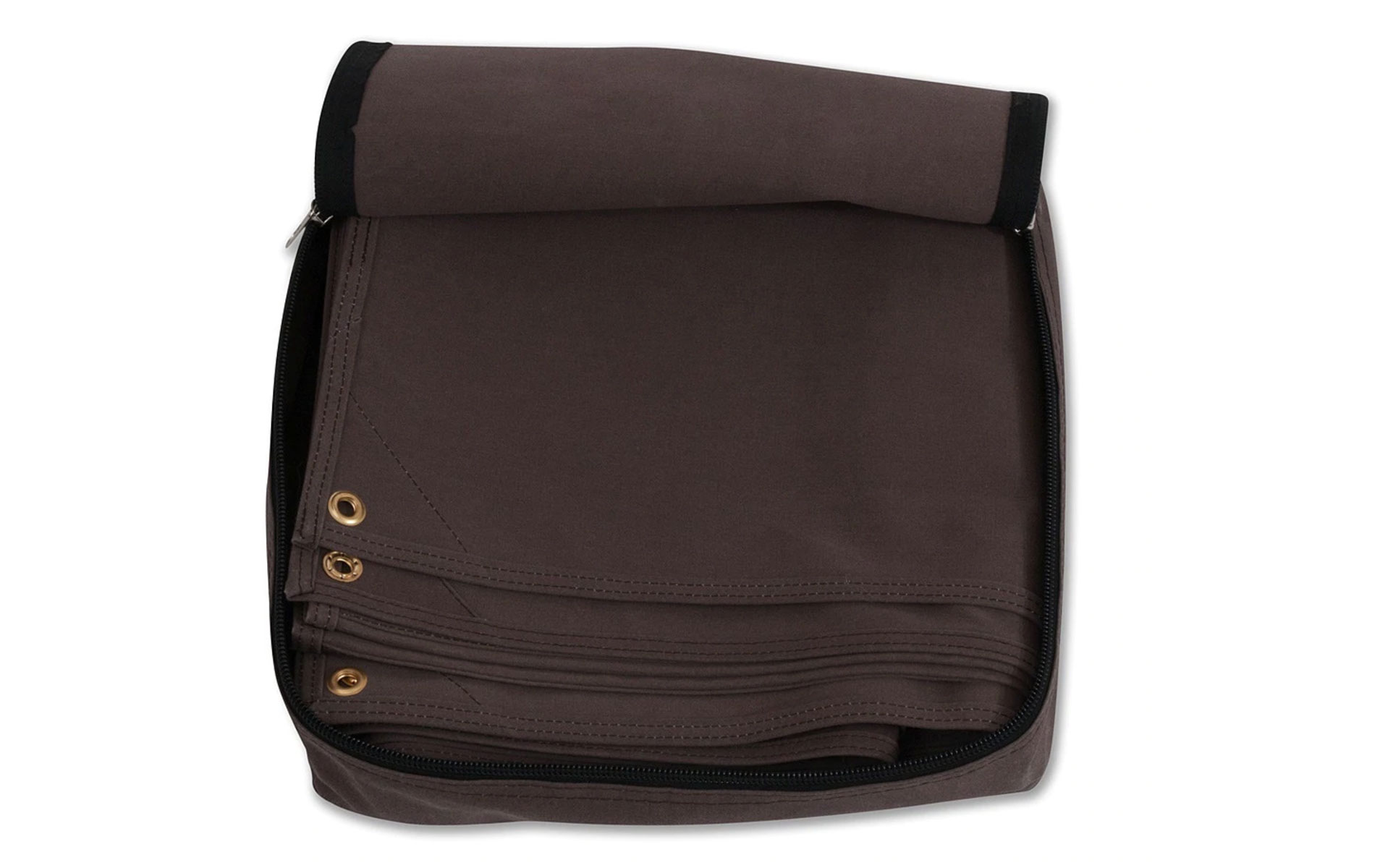
If the weather turns bad, a canvas groundsheet can be used as a tarpaulin over a swag or a tent or used as a windbreak. One thing to note is that a canvas groundsheet is made differently from a ripstop canvas swag and is heavier and thicker than that used on modern swags.
Pros
- They are thick so offer great protection
- Waterproof
- Breathable
Cons
- Expensive
- Hard to clean
- Stain easily
PVC
There is a reason that modern swags and some tents have PVC bases and that’s because it’s 100% waterproof and it is hard-wearing. However, PVC groundsheets are more like the rain ponchos you take to an outdoor rock concert, very lightweight. PVC groundsheets get mighty hot in the sun, and water pools on them when it rains.
A PVC groundsheet can be used as a shade sail or windbreak, but if you’ve even stood underneath a PVC awning, you know how unbearably hot it gets. To be honest, a PVC groundsheet is a bad idea and not a solution I would recommend. Searching the internet to try and find retailers turned up less than a handful but you can get them from Aussie Disposals or online at the Aussie Storm Shop.
Pros
- 100% waterproof
- Cheap
Cons
- Doesn’t breathe
- Water can pool on it
- Gets hot





